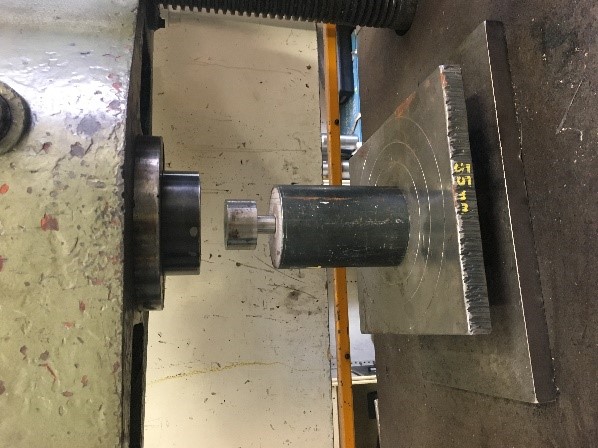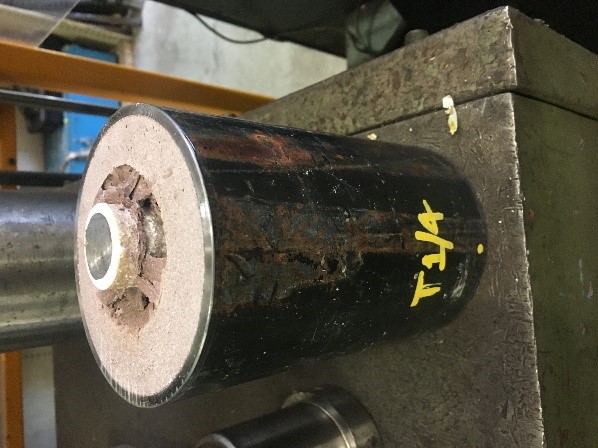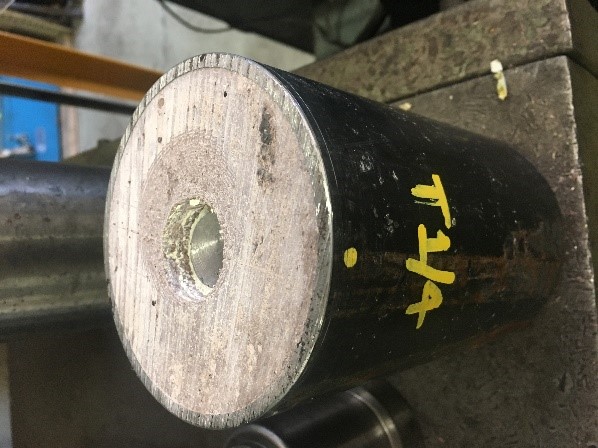The following is an article from Kent McTyer which appeared in the Ground Support 2023 Supplement
Resin curing time and rockbolt load transfer
By Kent McTyer, DSI Underground
Introduction
This study discusses an often-overlooked aspect of resin-anchored bolting – resin curing time. It is estimated that almost all underground coal mines and numerous hard rock mines in Australia employ resin-anchored bolts or cables that require a pause in the bolt or cable rotation on completion of mixing to allow the resin anchor to fully cure before applying pre-tension. However, the impact of premature tensioning on the ultimate load transfer of the bolt has not been fully investigated.
A common observation made during underground inspections of installed ground support is that the bolt tail length can vary between minimal (5–10 mm), moderate (10–100 mm) and long (>100 mm). The length of bolt tail that occurs after tensioning can be a function of surface strata lift during tensioning; however, where the surface strata is competent, bolt tail length may be the result of the bolt pulling through the still-curing resin column.
The theory tested is that pulling the bolt through the still-curing resin anchor will cause some degree of reduction in the strength of the rock–resin–bolt bond. This comes from the understanding that the polymerisation of rockbolt resin occurs rapidly, and that interrupting the curing by inducing movement of the bolt (and consequently resin) will weaken the finished molecular structure of the resin. This weakened molecular structure would then result in reduced load transfer. Rapid resin cure times make laboratory testing of resin in isolation difficult if not impossible. Thus, the test method chosen was to install bolts on a drill rig and simulate the underground conditions of both partially cured anchor and fully cured anchor, before applying pre-tension.
Method
The bolt installation and test techniques were developed over several years to evaluate resin-bolt systems used in coal mines. Drilling and installation conducted using a coal mine equivalent Sandvik D0100 drill rig (Figure 1).
1,500 mm-long test bolts were resin-anchored into steel cylinders filled with approximately 80 MPa (>28 day cured) cementitious grout. Electronic records of bolt revolutions per minute (RPM) and displacement were taken during bolt installation, and after bolt installation the length of the bolt tail was measured.
Bolts installed in the grout-filled cylinders were then sectioned for load transfer testing by the push-test method. Each sectioned sample length was 150 mm (Figure 2). Push tests were performed on a calibrated universal test machine (UTM) located in the DSI Underground test laboratory (Figure 3).


Figure 1. DSI Underground drill rig (grouted cylinder positioned above rig – top image)




Figure 3. Test samples using the push-test method
Results
Bolts were installed with rotation hold (cure) time adjusted to produce bolts with either no/minor bolt tail length, moderate bolt tail length, or long tail length. A total of nine bolts were evaluated.
Bolt installation and bolt tail length records
Each bolt installation was recorded for bolt RPM and displacement. An example plot is shown in Figure 4 showing three bolts installed using DSIU Type A resin capsules employing a nine second cure time. Note the minor additional upward bolt movement at the completion of mixing.

This additional feed was required to ensure the bolt, plate and nut were located firmly against the base of the grout-filled cylinder. This technique ensured all measured nut travel was the result of the bolt pulling through the still-curing resin column during tensioning. Bolt tail length was measured after bolt installations. It was observed that, for example, the Type A resin bolts produced very short bolt tail length with a resin curing time of 10 seconds (Figure 5). The figure also illustrates that a resin curing time of five seconds resulted in the nut tensioning causing the bolt to be pulled through the still-curing resin. The electronic records of the bolt installations are summarised in Table 1.
Table 1 shows premature nut tensioning (less curing) produced substantially longer bolt tails. The results highlight that increased curing time resulted in a decrease in bolt pull-out (with no impact on total bolt installation and tensioning time).


Bolt load transfer
A total of nine bolts were cut into 150 mm-long sections for push testing. After testing, peak push-out load was averaged at each of the four intervals from the three bolts (Table 2 and Figure 6).
The highest load transfer was typically seen in the two middle samples (950–1,250 mm) with a reduction in load transfer in the top interval and bottom interval. The reduced load transfer in the upper interval may be explained by the tendency for the collection of resin capsule film causing reduced load transfer in the upper portion of the bolt.

The reduction in load transfer in the lower interval (five-second cure time) may be explained by the impact of bolt tensioning on the partially cured resin. A possible explanation is that the resin in the lowest interval may have been in a phase of polymerisation critical to final strength development when tensioning and bolt movement occurred. Overall, the 10 second curing time (no tail) produced the highest load transfer, with an approximately 20% reduction with moderate tail length (nine-second curing), and an approximately 40% reduction when long tails were produced (five-second curing).
Conclusion
The study aimed to identify the influence of resin cure time on rockbolt load transfer. This was achieved by practical tests that simulate underground resin-anchored rockbolt installations and then laboratory tests to determine the effect on load transfer. The results of testing found that both less-cured resin and the interval closest to the collar were most adversely impacted by premature tensioning.
The results suggest mine management and staff should not only consult the manufacturer’s recommendations for mixing and curing times, but also should evaluate the resin performance in underground installation conditions. There is strong evidence that insufficient resin curing time will result in both longer bolt tails and a reduction in load transfer. Conversely, allowing the resin to fully cure will result in shorter bolt tails and optimise load transfer. Bolt tail length can easily be observed underground by both operators and supervisors and used to guide optimal bolt installation practice.

K McTyer, DSI Underground
